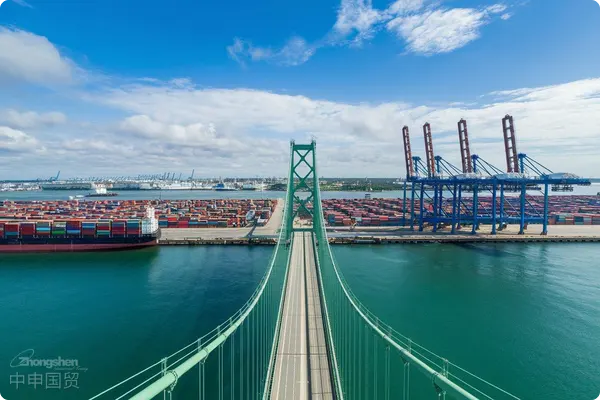- Shanghai Zhongshen International Trade Co., Ltd. - Two decades of trade agency expertise.
- Service Hotline: 139 1787 2118

Contents
ToggleIndustry Status: FoodEquipment ImportsRegulatory Upgrades Behind the Surge in Volume
The global food processing equipment market size is projected to exceed $86 billion by 2025, with China accounting for 34% as the world's largest importer. However, the latest "Inspection Regulations for Imported Food Machinery and Equipment" issued by the General Administration of Customs have introduced 12 new microbial control indicators and 8 material testing categories. In March 2025, a dairy company importing German pasteurization equipment failed to obtainEU EN1672-2 Food Machinery Safety CertificationIt resulted in a 37-day port congestion, incurring additional storage costs of 120,000 yuan.
Four core values of professional agency services
- Accurate classification and positioning of equipment
- Typical Case: The HS code for an Italian pasta forming machine was mistakenly classified under 8438.1000 (food processing machinery), when it should actually fall under 8442.3000 (specialized pasta equipment), resulting in a tariff difference of 5.3%.
- Technical Standards Pre-Verification System
- Establish a three-dimensional verification model incorporating ISO 14159 (hygienic design), 3-A Sanitary Standards (USA), and EHEDG certification (Europe).
- End-to-end transportation solution design
- A case of importing baking equipment: adoptingRo-Ro ship + dump truckThe combined solution reduces the damage rate by 25% compared to traditional container transportation.
- Dynamic Tariff Calculation System
- A three-dimensional tax calculation model based on equipment origin, trade agreements, and component composition, with an error rate controlled within ±0.8%.
Risk Prevention and Control Matrix: Analysis of Three Hidden Cost Scenarios
- Scenario 1: Classification Dispute Arising from Equipment Disassembly
- Countermeasures: Prepare the assembly flow chart and technical parameter comparison table in advance.
- Scenario 2: Lack of Hygiene Certification for Second-hand Equipment
- Solution: Implement a three-tier document verification system (manufacturer's certificate + third-party testing + importer's commitment)
- Scenario 3: Special Packaging and Transportation Requirements
- Key Operational Points: Establish a dual-path transportation filing mechanism for precision temperature control equipment.
New Benchmark for Agency Service Capability in 2025
Leading enterprises have established four core competency modules: AEO certification fast track (customs clearance efficiency improved by 40%), pre-inspection simulation system for local compliance (defect rate reduced by 62%), multinational technical standards database (covering 57 major trading nations), and equipment lifecycle management system (spanning the entire process from import to decommissioning). A case study involving the import of Japanese aseptic filling equipment demonstrated that professional agency services can reduce total costs by 23% and shorten customs clearance cycles by 42%.
Decision Recommendation: Five-Dimensional Evaluation Model for Agent Service Provider Screening
- Qualification verification dimension
- Customs AEO Advanced Certification + Mechanical and Electricalimport and exportChamber of Commerce Members with Dual Qualifications
- Case database dimensions
- Please provide at least 20 import cases of similar equipment from the past three years.
- Technical Team Dimension
- Assign dedicated mechanical and electrical classification specialists + customs affairs experts with a background in food engineering.
- Emergency response dimension
- Inspection Anomaly Handling Time Commitment (e.g., 2-hour Response Mechanism)
- Cost Control Dimension
- Provide a simulation calculation report of the tax-inclusive price that includes implicit costs.
Related Recommendations
? 2025. All Rights Reserved. Shanghai ICP No. 2023007705-2  PSB Record: Shanghai No.31011502009912
PSB Record: Shanghai No.31011502009912










